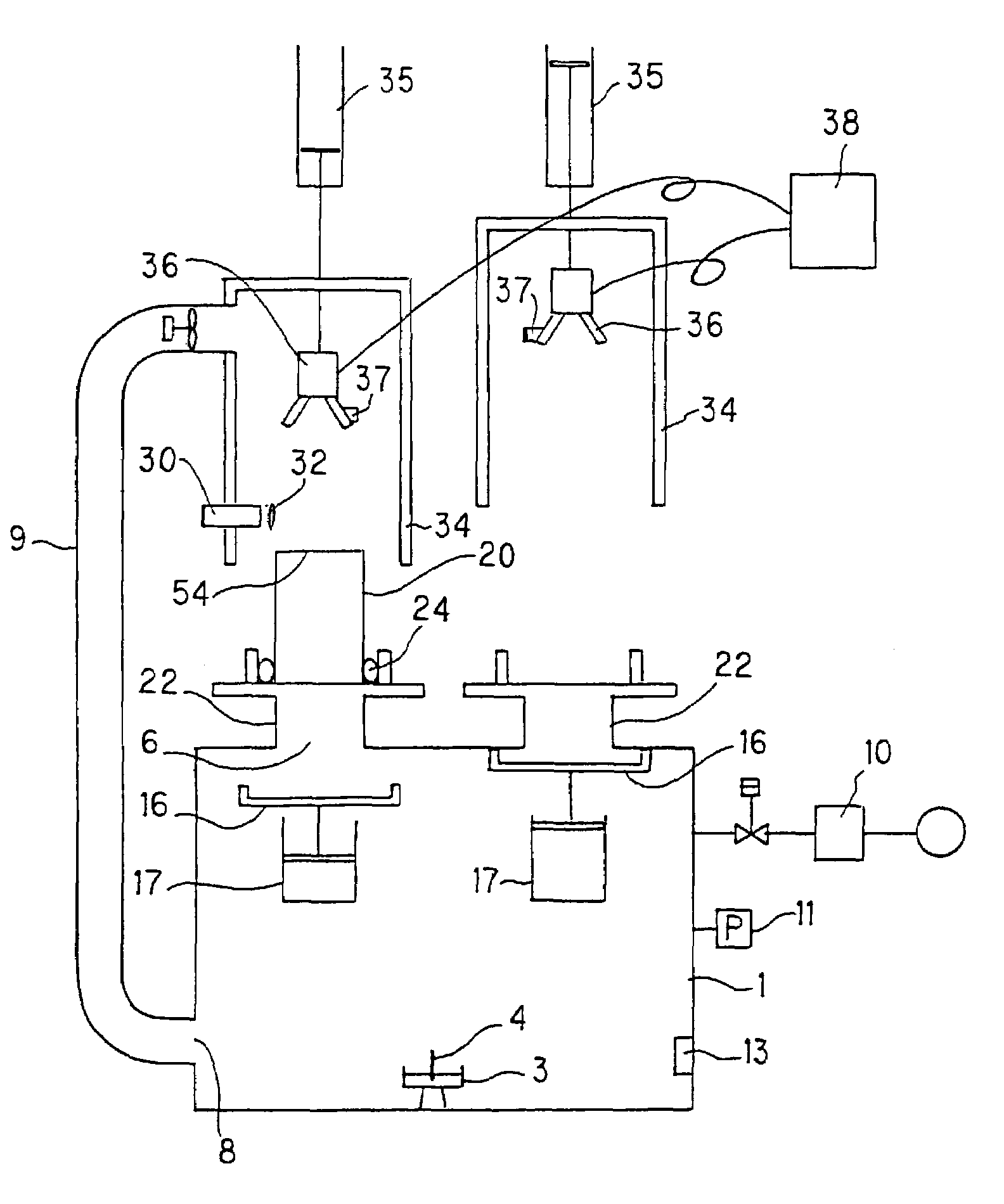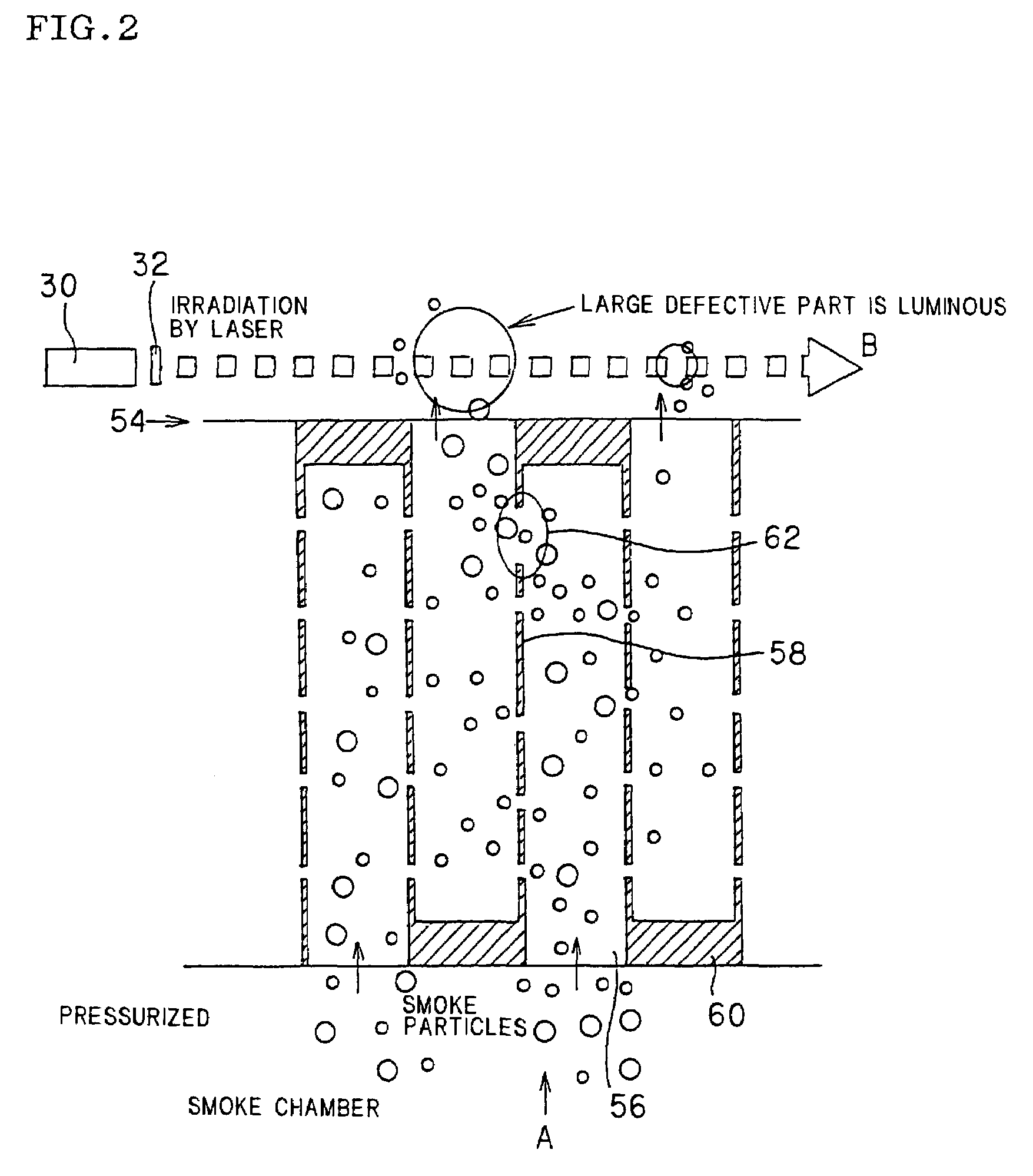Inspection method and inspection apparatus for detecting defects
a technology of inspection apparatus and test object, which is applied in the direction of optical radiation measurement, separation process, instruments, etc., can solve the problems of preventing the performance expected of the material from being fully displayed, interfering with the filtering performance of the porous member or the performance, and difficult inspection, so as to facilitate post-treatment inspection and identification. , the effect of easy recording
- Summary
- Abstract
- Description
- Claims
- Application Information
AI Technical Summary
Benefits of technology
Problems solved by technology
Method used
Image
Examples
example 1
[0044]Using the seal 24, the filter (a) was set on the mounting base 22 of the apparatus for checking a test object for defects shown in FIG. 1. Then, an incense stick was burnt to generate particulates of the particle size distribution shown in FIG. 5. When the concentration of the particulates reached 300 cells / cc, the inside of the particulate chamber was pressurized at 10 Pa by the pressurizing mechanism 10 to introduce the particulates into the filter (a). A He—Ne laser beam emitter was used as the light emitter 30, and a laser beam was emitted through the lens 32, the laser beam being planarly passed substantially in parallel to the upper surface of the filter (a) (the particulate discharge surface 54) at 3 mm above the filter (a). The laser beam irregularly reflected by discharged particulates was photographed by the CCD camera 36 and observed and recorded by the monitor 38. The time required from the start of the inspection to the photographing was five seconds. The filterin...
examples 2 and 3
[0045]The inspections were carried out for the filters (b) and (c) in the same manner as that of Example 1. The time required from the start of the inspection to photographing was five seconds. The filtering functions remained intact even when post-treatment was not carried out after the inspection. The photographed images are shown in FIG. 6(b) and FIG. 6(c).
PUM
| Property | Measurement | Unit |
|---|---|---|
| pressure | aaaaa | aaaaa |
| particle diameter | aaaaa | aaaaa |
| particle diameters | aaaaa | aaaaa |
Abstract
Description
Claims
Application Information
 Login to View More
Login to View More - R&D
- Intellectual Property
- Life Sciences
- Materials
- Tech Scout
- Unparalleled Data Quality
- Higher Quality Content
- 60% Fewer Hallucinations
Browse by: Latest US Patents, China's latest patents, Technical Efficacy Thesaurus, Application Domain, Technology Topic, Popular Technical Reports.
© 2025 PatSnap. All rights reserved.Legal|Privacy policy|Modern Slavery Act Transparency Statement|Sitemap|About US| Contact US: help@patsnap.com



